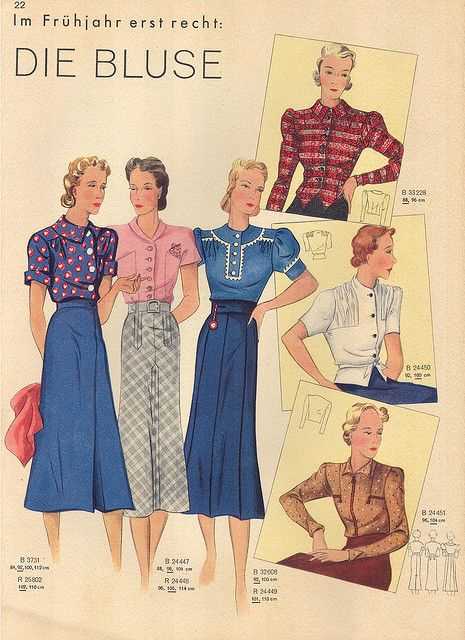
During the 1940s, knitting became not just a practical skill, but also a form of fashion expression. As women embraced the wartime spirit and the need for economy, knitting quickly became a popular pastime and a way to create stylish garments in a time of limited resources. In this article, we will explore the knitting fashions of the 1940s, including the different styles, patterns, and the historical context in which they emerged.
The 1940s were deeply influenced by the Second World War, which had a significant impact on fashion trends. With rationing in full swing, women had to get creative with their wardrobe choices, relying on thriftiness and knitting to keep up with the latest styles. As a result, knitting patterns for sweaters, cardigans, socks, and other garments became incredibly popular, enabling women to create fashionable pieces that were both practical and individual.
When it comes to the knitting fashions of the 1940s, two main styles come to mind: the classic and feminine “pin-up girl” look, and the more utilitarian and tailored “victory knits” style. The pin-up girl look often featured fitted sweaters with low-cut necklines, decorative buttons or bows, and intricate stitch patterns. On the other hand, victory knits were characterized by their simplicity and durability, reflecting the need for practicality during the war.
The Influence of World War II on 1940s Knitting Styles
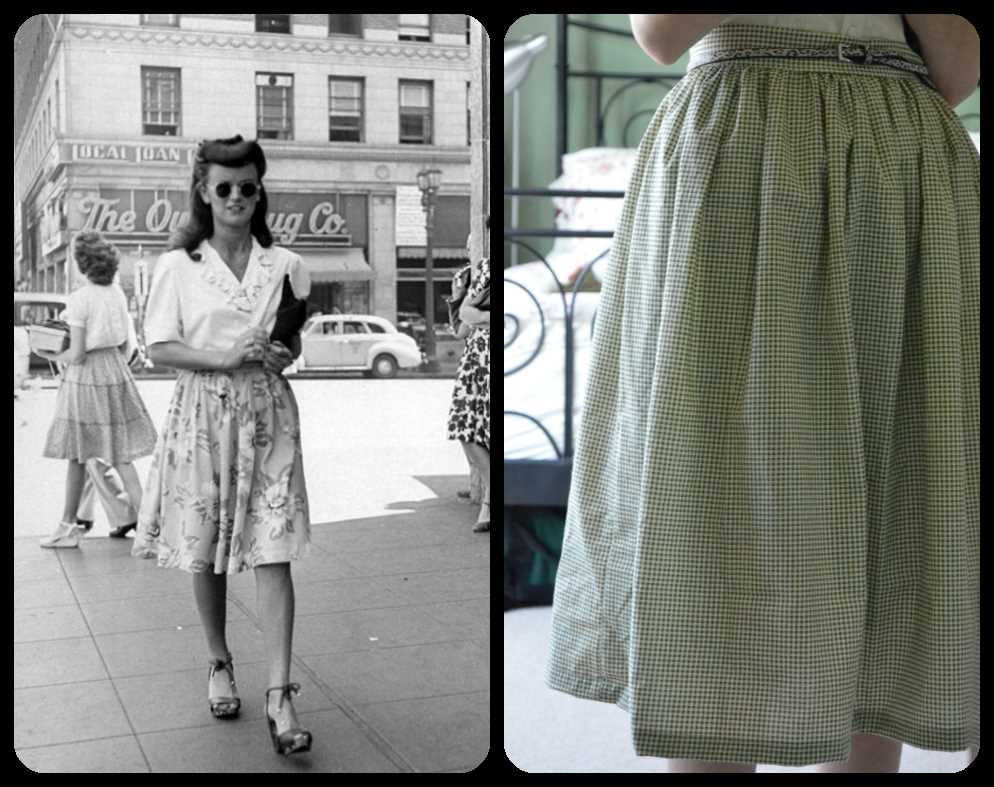
The fashion trends of the 1940s were greatly influenced by the events of World War II. The war had a significant impact on clothing and textile production, including knitting styles. Knitting became not only a popular pastime but also a necessity during this time, as resources were limited and people had to make do with what they had.
War-time restrictions: The war brought about severe restrictions on the production and availability of various materials, including wool. As a result, knitters had to be creative and resourceful in their choices of yarns and colors. Knitting patterns were often modified to accommodate the limited supply of materials, resulting in garments made with a mix of yarns or using unconventional materials such as paper or raffia.
Utility and practicality: With the rationing of materials, the emphasis shifted from luxury and extravagance to utility and practicality. Knitted garments became essential for keeping warm in the cold wartime conditions. Sweaters, cardigans, and socks were knitted for military personnel, and women on the home front also contributed by knitting for the troops.
In summary, the influence of World War II on 1940s knitting styles was profound. The war-time restrictions led to the use of alternative materials and modifications in knitting patterns. Knitted garments became not only fashionable but also necessary for survival in the challenging circumstances of the war. The knitting community played a vital role in supporting the war effort and preserving a sense of normalcy during a difficult time in history.
Popular Knitting Patterns of the 1940s

The 1940s was a time of war and rationing, which had a significant impact on the fashion industry, including knitting patterns. Knitting became not only a hobby but also a patriotic duty, as individuals knitted garments for troops overseas. Despite the constraints of the war, the 1940s saw the emergence of several popular knitting patterns that have stood the test of time.
1. The Victory Sweater: The Victory Sweater was a popular knitting pattern during the wartime era. It was a classic pullover style, often featuring cables or other intricate stitch patterns. The sweater was designed to be warm and cozy, suitable for the cooler months. Knitters used various yarns, including wool and acrylic blends, to create this versatile and fashionable garment.
2. The Argyle Socks: Argyle socks gained popularity during the 1940s and became a staple in men’s fashion. The pattern typically featured diamond-shaped motifs in contrasting colors, often with a color palette of red, blue, and yellow. Knitters used finer gauge yarn and intricate stranded knitting techniques to achieve the distinct argyle pattern. Argyle socks were not only stylish but also provided an extra layer of warmth during cold winters.
3. The Twin Set: The twin set was a popular knitwear ensemble for women during the 1940s. It consisted of a matching cardigan and pullover, usually made from lightweight yarn such as cotton or rayon. Knitters often added delicate lace patterns or small decorative buttons to enhance the femininity of the twin set. This versatile outfit could be dressed up or down, making it a favorite choice for both casual and formal occasions.
4. The Fair Isle Sweater: The Fair Isle sweater, with its distinctive stranded colorwork, became popular in the 1940s. This technique involved using different colors of yarn to create intricate patterns and motifs, often inspired by traditional Scottish designs. Fair Isle sweaters were traditionally made from wool and featured a combination of natural and vibrant colors. The timeless appeal of this knitting pattern continues to be celebrated today.
5. The Snood: The Snood was a popular accessory in the 1940s, especially among women working in factories and other industrial settings. This hair covering kept women’s hair neat and tidy while also adhering to safety regulations. Snoods were typically knitted using fine yarn and lace patterns, often incorporating elastic to ensure a snug fit. They added a touch of elegance to women’s workwear and helped define the fashion of the era.
The popular knitting patterns of the 1940s showcased creativity and craftsmanship in the midst of wartime austerity. They represented a way for individuals to express themselves and contribute to the war effort while also staying fashionable. Today, these patterns continue to inspire knitters, preserving the legacy of this influential era in knitting history.
Classic 1940s Knitting Techniques
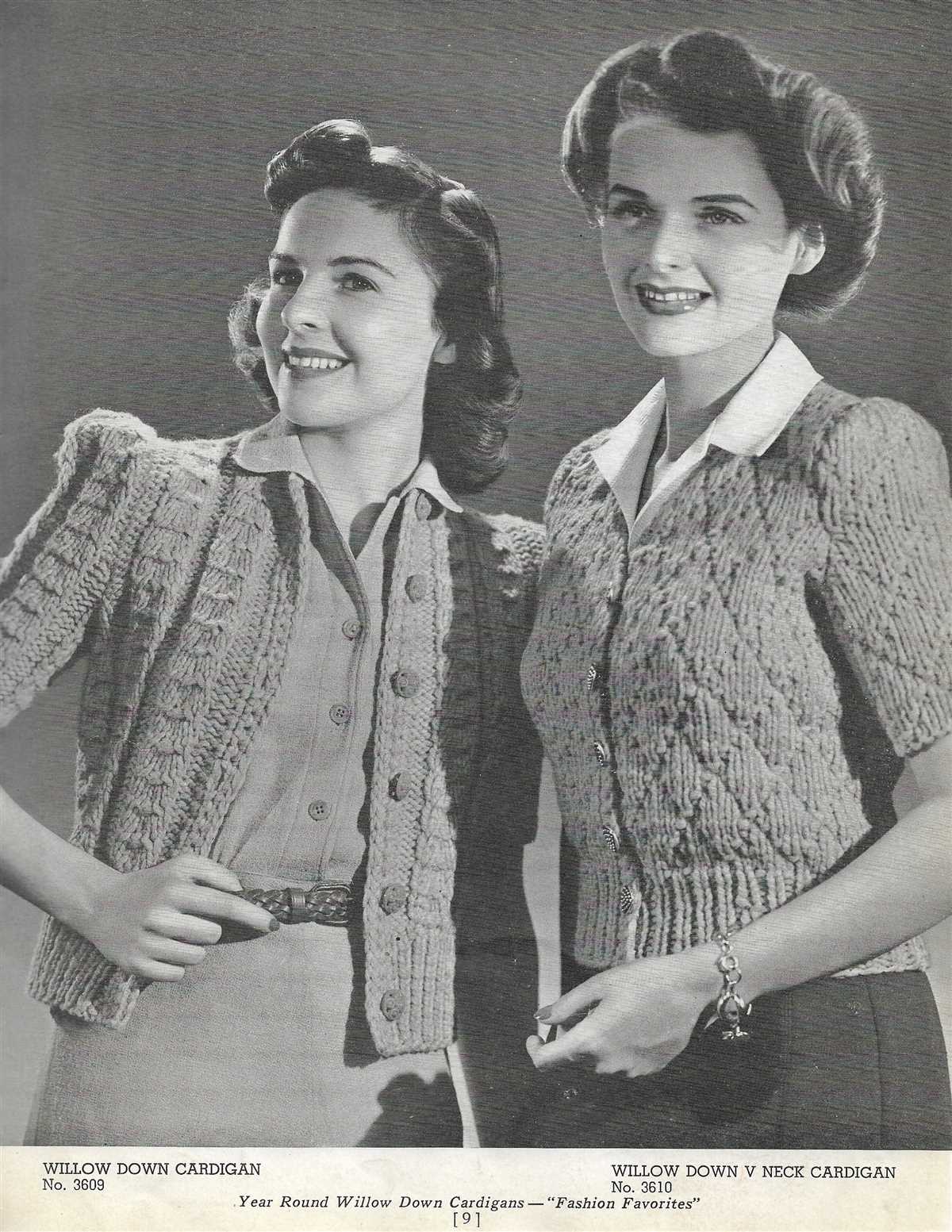
In the 1940s, knitting became an essential part of everyday life, especially during World War II when clothing and materials were rationed. Knitting was not only a practical skill but also a way to showcase creativity and fashion. Knitters during this era embraced various techniques to create unique and stylish garments.
Fair Isle knitting: One of the most popular techniques during the 1940s was Fair Isle knitting, which originated from the Fair Isle in Scotland. This technique involved using multiple colors in a row to create intricate and colorful patterns. The patterns usually consisted of small repeating motifs and were often featured on sweaters, hats, and gloves. Fair Isle knitting added a touch of elegance and sophistication to the fashion of the time.
Cable knitting: Another iconic knitting technique from the 1940s was cable knitting. Cable stitches were used to create woven-like patterns, resembling the cables used in sailing. This technique was often utilized to add texture and depth to garments such as cardigans and scarves. The intricate and visually appealing cable patterns became a signature of 1940s knitting and added a timeless charm to any outfit.
Lace knitting: Lace knitting was also prevalent during the 1940s, although it had a more delicate and feminine aesthetic compared to Fair Isle and cable techniques. Lace patterns were created using various decreases and yarn overs to form intricate and airy designs. Lace was commonly featured in shawls, sweaters, and collars, giving a touch of elegance and femininity to the outfits of the time.
Full-fashioned knitting: Full-fashioned knitting was a technique used to shape the fabric while knitting, creating a tailored look. This technique involved increasing or decreasing stitches strategically to achieve a desired fit and shape. It was often used for creating well-fitted sweaters, dresses, and jackets. Full-fashioned knitting ensured that the garments hugged the body in all the right places, emphasizing the hourglass figure that was popular during the 1940s.
These are just a few of the classic knitting techniques that were prevalent during the 1940s. Each technique added its own unique flair to the fashion of the time, showcasing the creativity and craftsmanship of knitters from that era.
The Role of Knitting in the 1940s Economy

Knitting played a crucial role in the 1940s economy, both in terms of providing income to individuals and supporting the war effort. During this time period, knitting became a popular hobby and a way for women to contribute to the war effort from their homes. It also became an important skill for those looking for ways to supplement their income.
One of the primary ways knitting contributed to the economy was through the creation of knitted garments for soldiers. Knitting groups and organizations were formed to support the troops by providing them with warm socks, scarves, and gloves. These items were in high demand as soldiers needed protection from the harsh conditions on the battlefields. The knitting industry expanded to meet this demand, creating jobs and providing income for many individuals.
Knitting patterns and materials
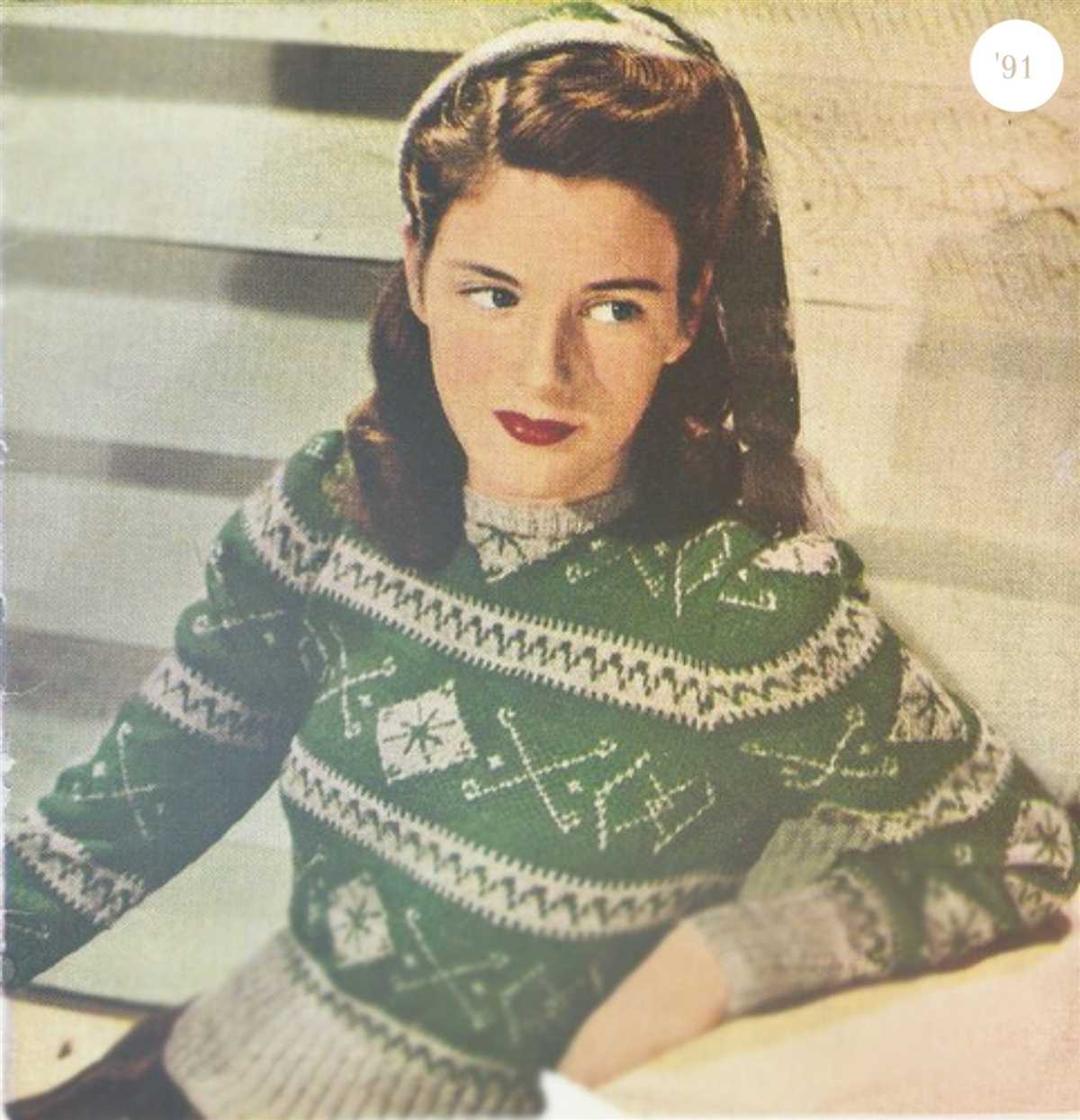
Knitting patterns and materials also became valuable commodities during the 1940s. Knitting pattern books were published, providing detailed instructions for creating a variety of garments, from sweaters to hats. These books were not only used by individuals for personal knitting projects, but also sold to generate additional income for publishers and designers.
Additionally, the demand for knitting materials such as yarn and needles increased significantly. Yarn companies capitalized on this demand by producing a wide range of colors and textures to cater to different knitting projects. The production and sale of knitting materials created jobs and contributed to the overall growth of the economy during this time.
Exploring 1940s Knitting Magazines and Publications
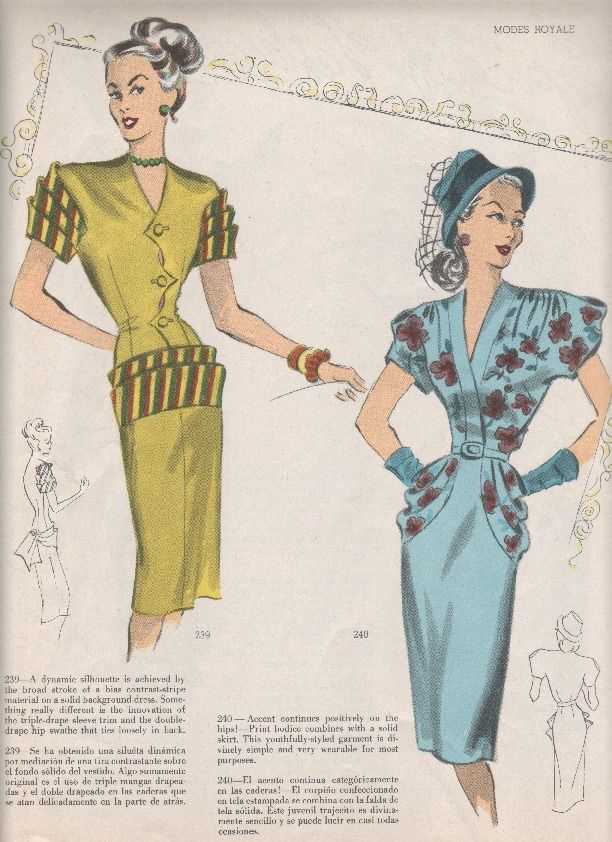
The 1940s was a period of great creativity and innovation in the world of knitting. Knitting magazines and publications played a crucial role in disseminating the latest knitting patterns, styles, and techniques to the enthusiastic knitting community. These magazines were a treasure trove of inspiration for knitters, providing them with a wide range of patterns and designs to create fashionable garments for themselves and their loved ones.
One popular knitting publication of the 1940s was “Knitting Digest,” which featured a variety of knitting patterns suitable for all ages and occasions. The magazine showcased stylish designs for sweaters, cardigans, dresses, and even accessories like hats and gloves. Knitters could find patterns for both casual and formal wear, enabling them to create fashionable garments for everyday wear or special occasions.
Another influential knitting magazine of the era was “Knitting Illustrated.” This publication focused on providing step-by-step instructions and illustrations for various knitting techniques. From basic stitches to intricate cable patterns, “Knitting Illustrated” served as a valuable resource for knitters looking to expand their skillset. The magazine also featured interviews with renowned knitting experts, offering insights into their creative process and inspiring readers to push their boundaries.
- Knitting Digest: A popular knitting magazine of the 1940s that featured a variety of patterns for sweaters, cardigans, dresses, and accessories.
- Knitting Illustrated: An influential publication that provided step-by-step instructions and illustrations for various knitting techniques.
In addition to these magazines, there were also knitting pattern books that gained popularity during the 1940s. These books often showcased collections of patterns, focusing on a specific theme or style. For example, “Retro Knits: Vintage-Inspired Patterns for the Modern Knitter” featured patterns inspired by the fashion trends of the 1940s, allowing knitters to recreate the iconic styles of the era.
The knitting magazines and publications of the 1940s not only served as a source of patterns and designs but also played a significant role in fostering a sense of community among knitters. These publications featured letters from readers, showcasing their finished projects and sharing tips and tricks. This exchange of ideas and experiences created a sense of camaraderie among knitters, encouraging them to explore their creativity and engage with the knitting community in meaningful ways.
Knitting for the Troops: Supporting the War Efforts

During the 1940s, knitting played a crucial role in supporting the war efforts. Knitting for the troops became a popular activity, with people all over the country coming together to produce handmade items for soldiers on the front lines. Knitting not only provided warm and practical garments, but it also brought a sense of comfort and support to those serving their country.
Knitting patterns specifically designed for the troops were widely distributed and showcased in various knitting magazines and publications. These patterns often focused on creating items that were practical and durable, such as socks, hats, gloves, and scarves. The patterns also took into consideration the limited resources available during wartime, encouraging the use of yarn substitutes and making the most out of existing supplies.
One of the most popular items requested by the troops was the “helmet liner,” which was essentially a knitted cap worn under a soldier’s helmet to provide insulation and protection. Knitters across the country took up the task of producing these helmet liners in large quantities, contributing to the war effort. Some even formed knitting circles and groups dedicated solely to producing these essential items.
Not only did knitting for the troops help provide necessary items, but it also served as a means to boost morale and show support for the soldiers. Handmade items were often accompanied by personal messages and notes of encouragement, further connecting knitters with the troops they were supporting. Knitting became a symbol of solidarity and patriotism, as individuals of all ages and backgrounds joined together to contribute to the war effort in their own way.
The knitting fashions of the 1940s played a significant role in supporting the troops and the war efforts. Knitters’ dedication and contribution during this time are a testament to their unwavering support for the soldiers fighting overseas.
Knitting as a Form of Personal Expression in the 1940s

In the 1940s, knitting was not just a practical skill, but also a means of personal expression. Women turned to knitting as a way to showcase their creativity and individuality, especially during the wartime era. Knitting allowed them to take control of their fashion choices and create unique garments that reflected their personality and style.
During this time, knitting patterns became highly sought after, offering a wide range of options for women to choose from. From intricate lace patterns to cozy sweaters, there was something for every skill level and taste. Women eagerly collected knitting pattern books and magazines, pouring over the pages and imagining the possibilities.
Knitting in the 1940s was not just about creating clothing, but also about making a statement. Women used their knitting skills to show their support for the war effort, often knitting scarves, gloves, and socks for soldiers on the frontlines. These patriotic items not only helped to keep soldiers warm but also served as a symbol of unity and support.
Knitting also allowed women to express their individuality in a time of rationing and limited resources. By creating their own clothing and accessories, they could stand out from the crowd and add a personal touch to their outfits. Knitting allowed them to experiment with different colors, textures, and patterns, creating garments that were truly one-of-a-kind.
Knitting in the 1940s was more than just a hobby; it was a way for women to assert their creativity and individuality. It provided them with a sense of empowerment and allowed them to make a personal statement in a time of uncertainty and upheaval.
Highlights of knitting as a form of personal expression in the 1940s:
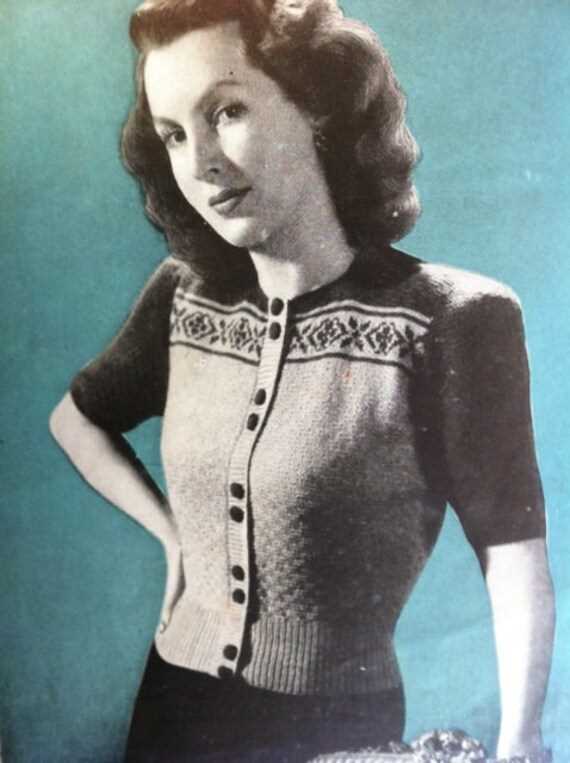
- Knitting was a means for women to showcase their creativity and individuality.
- Knitting patterns offered a wide range of options for women to choose from.
- Knitting was used to show support for the war effort.
- Knitting allowed women to express their individuality in a time of limited resources.
- Knitting provided a sense of empowerment and personal statement in a time of uncertainty.
Knitting Styles and Fashions for Women in the 1940s
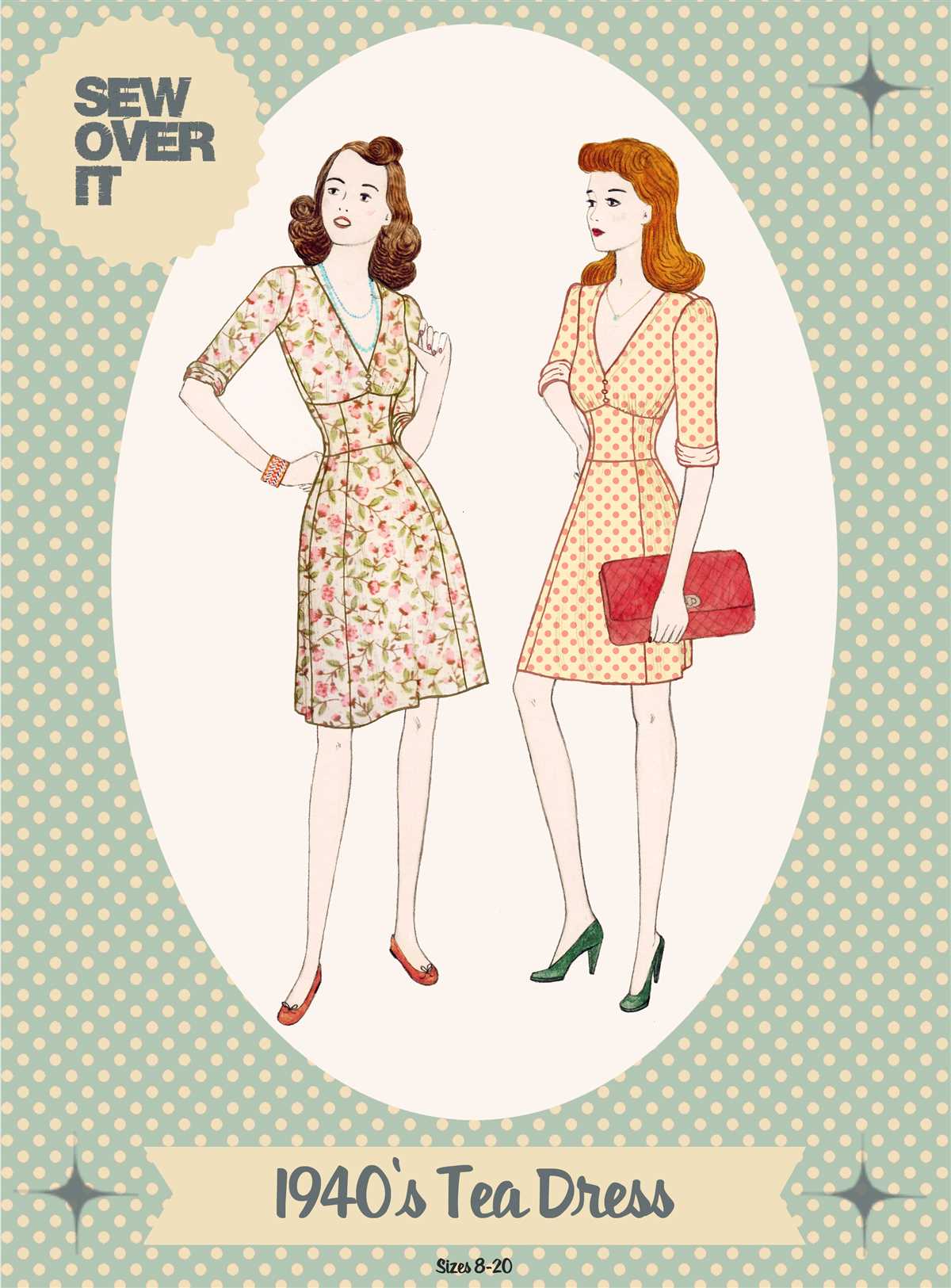
The 1940s marked a significant period in knitting history for women, as the fashion trends reflected the social and cultural changes during World War II. Knitting became not only a practical skill, but also a way for women to contribute to the war effort and express their individuality. The knitting styles of the 1940s were characterized by a blend of traditional and modern designs, which showcased feminine elegance and functionality.
One of the key knitting styles of the 1940s was the “victory suit,” a two-piece ensemble consisting of a tight-fitting knitted top and a matching skirt. These suits were often worn for patriotic events, emphasizing the resilience and determination of women during wartime. The tops of the victory suits were typically adorned with intricate cable stitches or lace patterns, adding a touch of femininity to the overall look.
Another popular knitting trend in the 1940s was the use of bold colors and patterns. Women embraced vibrant hues like red, emerald green, and royal blue, which symbolized hope and optimism during challenging times. Knitted garments, such as sweaters and cardigans, were often decorated with geometric patterns, stripes, or floral motifs, creating a visually striking and fashion-forward aesthetic.
Crocheted collars and cuffs were also a prominent feature of 1940s knitting styles. These delicate accessories were often added to knitted dresses and blouses, giving them a touch of elegance and refinement. Women would spend hours crafting intricate lace patterns using fine thread, showcasing their craftsmanship and attention to detail.
In summary, the knitting styles and fashions for women in the 1940s were a fusion of tradition and innovation. Knitted garments reflected the resilience and spirit of women during wartime, while also incorporating bold colors, patterns, and delicate embellishments. These unique and timeless styles continue to inspire modern fashion and show the enduring appeal of knitting as both an art form and a means of self-expression.
Knitting Styles and Fashions for Men in the 1940s
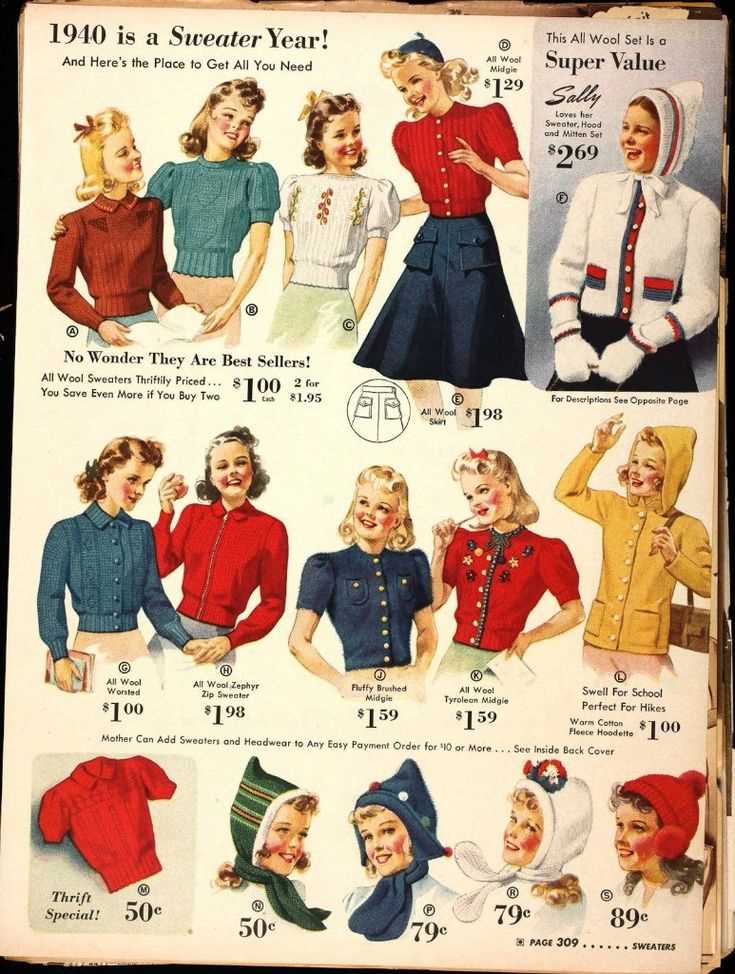
In the 1940s, knitting became an increasingly popular hobby for both men and women. Men, in particular, embraced knitting as a way to create their own stylish garments and accessories. Knitted sweaters, vests, and scarves were popular choices for men during this time, with a focus on masculine designs and colors.
Menswear in the 1940s was characterized by a more tailored and structured look, and this translated into knitting patterns as well. Sweaters were often knit in heavier weights and featured classic patterns such as cables, checks, and argyle. The colors used were typically more subdued, including shades of brown, gray, navy, and olive green.
One popular style for men during this era was the V-neck sweater. This versatile garment could be worn casually with a pair of slacks or dressed up with a suit. The V-neck design was often combined with a simple ribbed pattern or featured a central cable motif. Another popular choice was the cardigan, which could be buttoned up for a more formal look or left open for a casual and relaxed vibe.
Accessories were also an important part of men’s fashion in the 1940s. Knitted scarves, gloves, and hats were practical and stylish additions to any outfit. Scarves were often knit in a simple ribbed or garter stitch pattern and could be worn draped over the shoulders or wrapped around the neck. Gloves were typically fingerless or had open fingertips, allowing for easy movement while keeping the hands warm. Knitted hats, such as the classic watch cap or fedora, were popular choices to complete a man’s look.
- In summary, knitting styles and fashions for men in the 1940s were characterized by masculine designs, structured silhouettes, and a focus on practicality. V-neck sweaters, cardigans, scarves, gloves, and hats were all popular choices for men during this era. Knitted garments and accessories were often made in heavier weights and featured classic patterns such as cables and checks, as well as subdued colors. Knitting became a popular pastime for men in the 1940s, allowing them to create their own stylish and personalized clothing.
Knitting for Children in the 1940s: Styles and Patterns

In the 1940s, knitting for children was a popular and practical pastime for many mothers and grandmothers. With limited options for purchasing clothing during the wartime rationing, handknitted garments became essential for keeping children warm and stylish. Knitting patterns for children’s clothing were widely available and usually featured classic designs that emphasized durability and functionality.
Styles: The 1940s saw a variety of knitting styles for children’s clothing, reflecting the fashion trends of the time. Sweaters, cardigans, and pullovers were popular choices for both boys and girls. Girls’ knitted dresses were also common, often featuring puffed sleeves, peter pan collars, and floral patterns. Knitted rompers and jumpers were popular for younger children. Knitted accessories such as hats, gloves, and scarves were also popular additions to complete the outfits.
Patterns: Knitting patterns for children’s clothing often included detailed instructions and diagrams to guide knitters of all skill levels. Classic knitting stitches, such as cables, ribbing, and Fair Isle, were commonly used to add texture and pattern to the garments. The patterns also often included options for customization, such as different color combinations or variations in length and fit. Knitted garments were typically made using wool or wool-blend yarns, known for their warmth and durability.
In summary, knitting for children in the 1940s offered a wide range of stylish and practical options. The knitting patterns available during that time allowed mothers and grandmothers to create warm and fashionable garments for their children, despite the limited resources of the wartime era. Whether it was a cozy sweater, a cute dress, or a practical romper, handknitted clothing provided both style and utility for children in the 1940s.
Reviving 1940s Knitting Styles: Tips and Resources
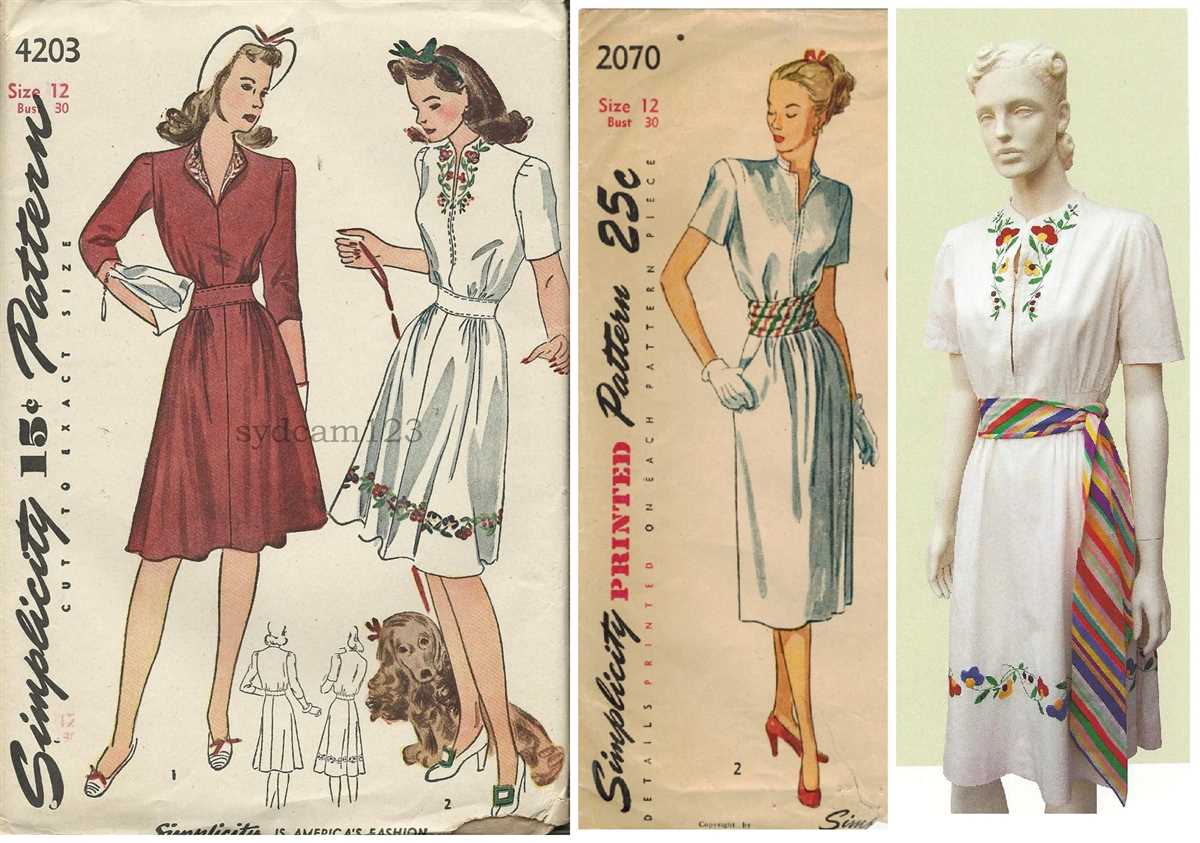
The knitting fashions of the 1940s are known for their classic elegance and timeless appeal. If you’re looking to bring these vintage styles back to life, here are some tips and resources to help you get started.
1. Choose the Right Patterns: Look for knitting patterns from the 1940s that feature classic silhouettes and intricate detailing. Patterns for sweaters, cardigans, dresses, and accessories like gloves and hats were popular during this era.
2. Select Authentic Yarns: To achieve an authentic 1940s look, consider using yarns that were popular during that time period. Look for natural fibers like wool, cotton, and silk, as synthetic fibers were not widely available at the time. Choosing yarns in appropriate colors, such as rich jewel tones and pastels, will also help enhance the vintage feel.
3. Brush Up on Techniques: Familiarize yourself with the knitting techniques commonly used in the 1940s. This may include techniques like cables, lacework, and colorwork. There are many resources available online and in knitting books that can help you master these techniques.
4. Join a Knitting Community: Connect with other knitting enthusiasts who share your passion for 1940s knitting styles. Online knitting forums and social media groups can be a great way to find like-minded individuals who can offer guidance, support, and inspiration.
5. Explore Vintage Stores: Visit vintage stores or browse online marketplaces to find authentic 1940s knitted garments and accessories. These pieces can serve as a source of inspiration and provide insights into the construction and design elements of that era.
6. Preserve Family Heirlooms: If you’re lucky enough to have hand-knitted items from the 1940s that have been passed down through generations, take the time to preserve and care for them. These heirlooms can provide a valuable connection to the past and serve as a source of inspiration.
7. Attend Vintage Knitting Workshops: Check if there are any local workshops or knitting events dedicated to vintage knitting styles. These workshops often provide hands-on instruction and the opportunity to learn from experienced knitters who specialize in recreating 1940s fashions.
8. Online Resources: Take advantage of online resources such as knitting blogs, video tutorials, and digital vintage knitting pattern libraries. These resources can provide valuable insights, step-by-step instructions, and examples of 1940s knitting styles.
Conclusion: Reviving 1940s knitting styles can be a rewarding and creative endeavor. By choosing the right patterns, selecting authentic yarns, mastering the techniques, and connecting with other knitting enthusiasts, you can bring the elegance and charm of the 1940s back to life.